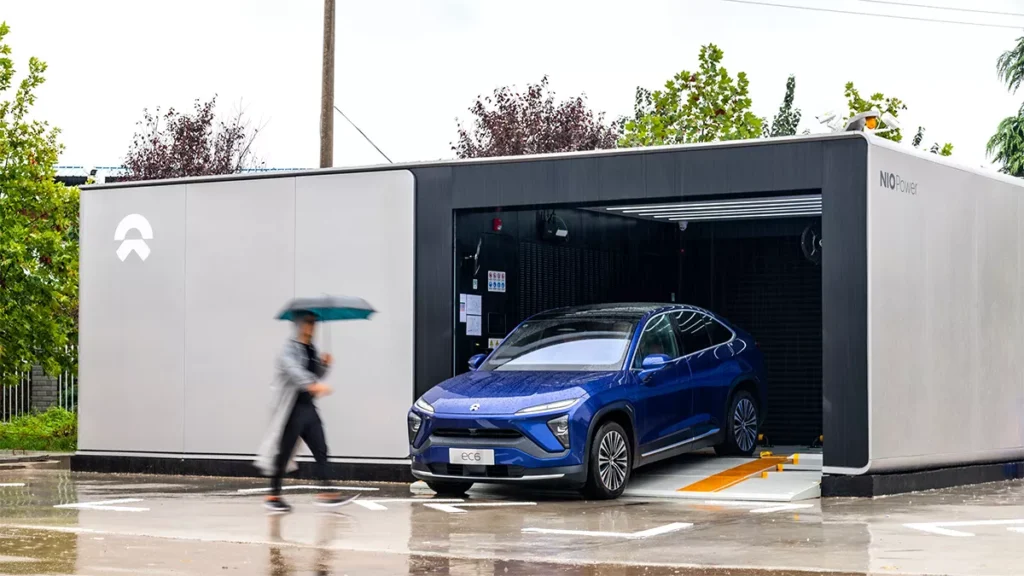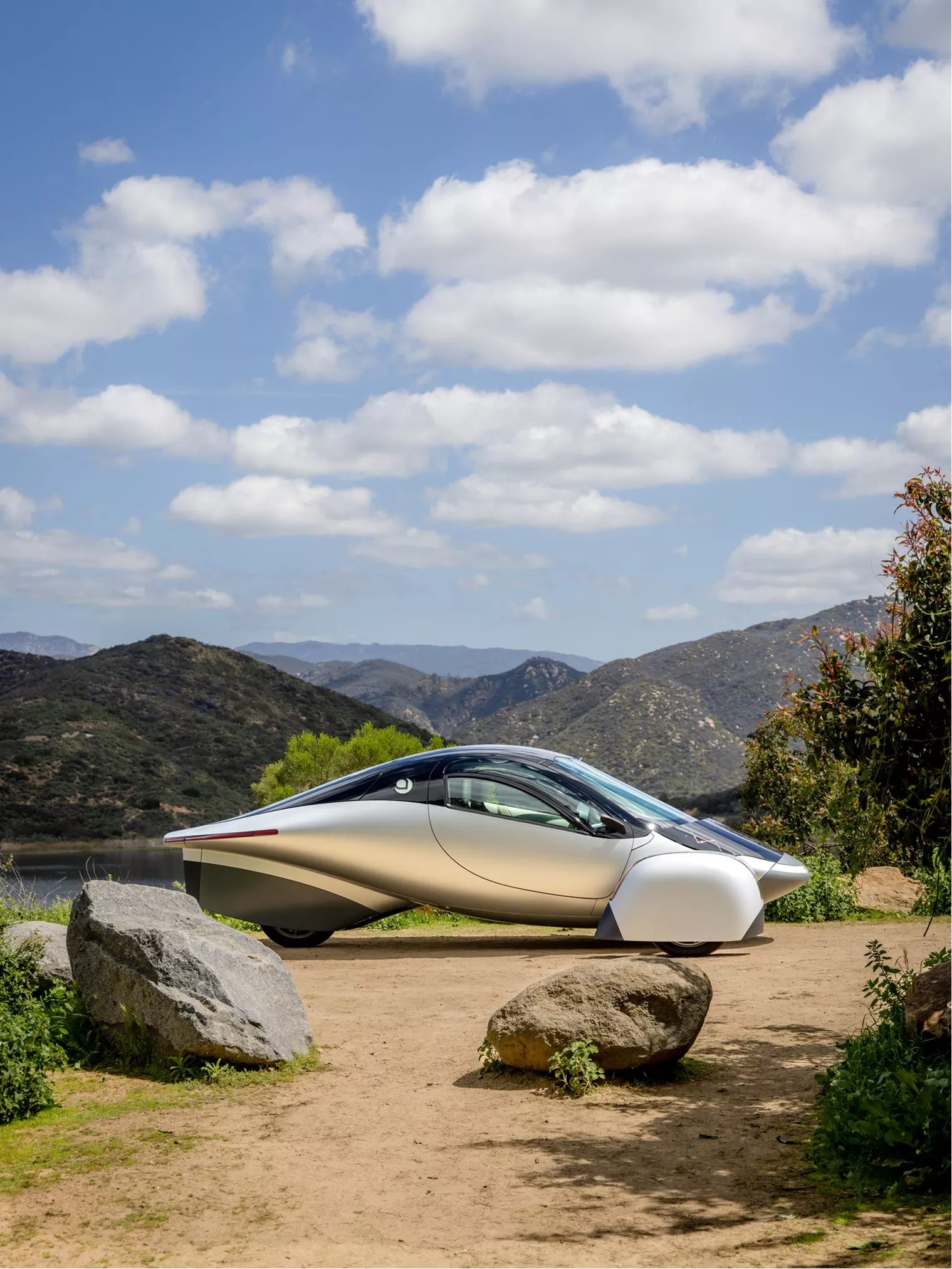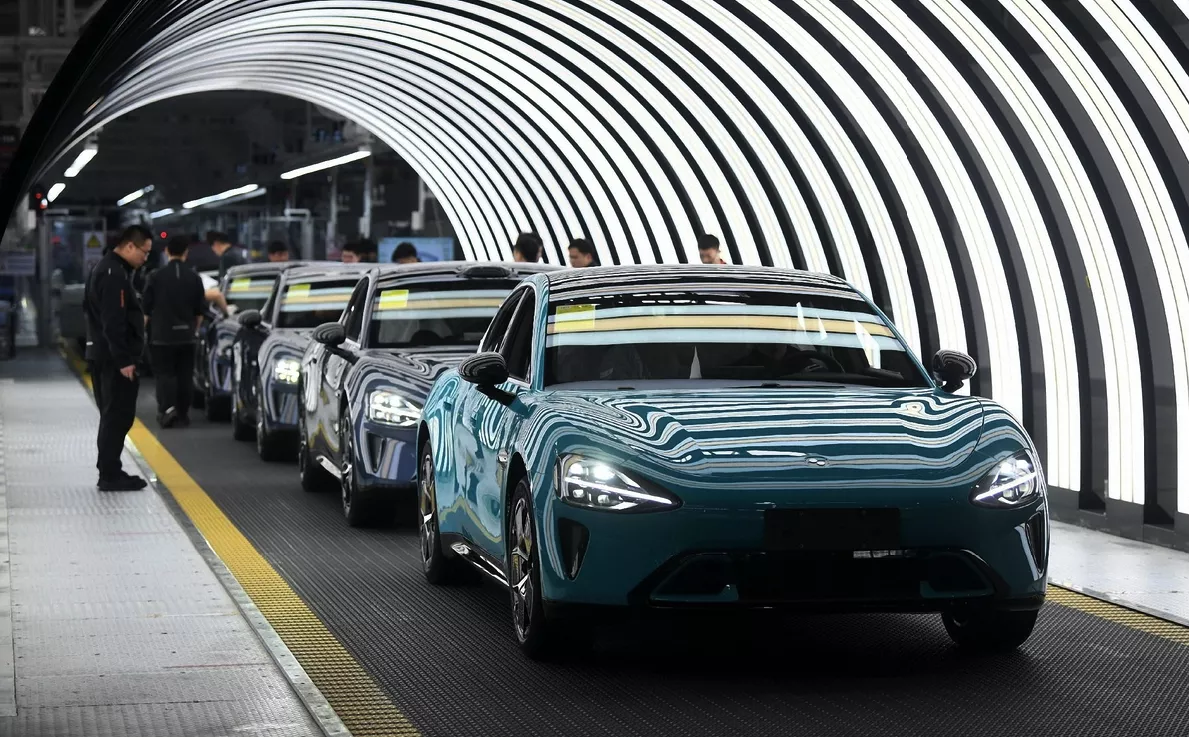










From EVs and batteries to autonomous vehicles and urban transport, we cover what actually matters. Delivered to your inbox weekly.

The EV market just hit a wall — and that wall is made of tariffs.
In a dramatic turn, the U.S. has slammed the brakes on global auto trade with a double punch:
This is a full-on restructuring of the EV supply chain, one that could reshape pricing, production, and global power dynamics for years to come.
Here’s what it means:
🚫 Budget EVs from China? Blocked.
💸 Battery materials? Pricier.
🚗 Imported models? 25% more expensive.
📉 EV adoption goals? At risk.
Welcome to the new era of economic electrification warfare — where industrial policy and climate goals collide.
👇 Let’s unpack the fallout.
Transport systems aren’t broken, they’re disconnected. And UbiRider is stitching them back together. This Portugal-based company is behind Pick, a mobility-as-a-service (MaaS) platform that unifies trip planning, ticketing, and payments into a single, sleek experience. Think trains, buses, scooters, and more — all in one tap.
With real-time info, contactless tap-on-phone payments, and operator-friendly back-office tools, Pick is reducing friction for riders and slashing costs for transit agencies.
Learn more about Ubirider here.
Electric vehicles were supposed to globalize fast. Instead, they’re getting caught in an economic iron curtain.
1) China-led → cost-efficient, vertically integrated, expanding across Asia, Africa, and Latin America.
2) U.S.-centric → built on protectionist trade + IRA subsidies, focused on domestic supply chains and job creation.
3) EU zone → climate-driven, subsidy-supported, but under pressure to keep up on price and scale.

As seen above, even the U.S. companies like Ford, GM, and Tesla source a ton of components outside the U.S.
A quick disclaimer — All the data on sourcing comes from the American Automobile Labelling Act (ALAA), which currently doesn’t differentiate between US or Canadian origin.
⚡️ The electric future is still coming — but it’s arriving behind trade walls, not open highways.
Tariffs are in, EV optimism is out. Here’s what you need to know as protectionism reshapes the global auto game.

🥊 Elon vs. Trump: Sparks Fly Over Tarrifs
Tesla CEO, Elon Musk, is back in battle mode, publicly slamming the Trump administration’s sweeping new tariffs. After White House adviser Peter Navarro downplayed the risks, Musk fired back — calling him a “moron” and warning that the 25% duty on imported auto parts could disrupt Tesla’s cost structure and broader EV progress. It seems even Tesla isn’t immune. (Politico)
📈 BYD Rises as the West Stumbles
Ironically, Trump’s tariff barrage is supercharging China’s EV champions. Shares of BYD jumped, buoyed by its homegrown supply chain, advances in autonomous driving, and rapid-charging breakthroughs.While the U.S. scrambles to build factories, BYD is exporting dominance. (Financial Times)
📉 Americans Are Losing Interest in EVs
New polling shows just 51% of U.S. consumers are now open to buying an EV — down from 59% in 2023. Rising prices, fading incentives, and shaky infrastructure are cooling demand. Affordability was already shake — and tarrifs made it worse. (Sherwood News)
🇬🇧 UK Softens EV Mandates Amid Tariff Turmoil
In response to global tariff shocks and industry pressure, the UK government has loosened its ZEV (Zero Emission Vehicle) targets to give automakers more flexibility. Global trade friction is reshaping climate policy, even in markets once seen as regulation leaders. (The Guardian)
🚫 New U.S. Tariffs Will Make Imported EVs Unaffordable
A recent policy brief warns that 25% tariffs on imported EVs and components could make them financially out of reach for mainstream buyers. Many imports already miss out on IRA tax credits — now they get a double whammy: no subsidy + massive tariff. That $45K EV from Korea? It might cost $56K by summer. (Barron’s)
🏭 Battery and EV Factory Projects Cancelled
The clean energy slowdown is real. A wave of EV and battery plant cancellations is sweeping the U.S., with investors citing policy uncertainty and rising costs as major deterrents. When capital expenditure pulls back, the whole transition slows down. (The Washington Post)
Suddenly, electrification doesn’t look so cheap. Or so global.
The U.S. just threw down a 25% tariff on all imported vehicles, slapped 100% duties on Chinese EVs, and added new taxes on batteries, minerals, and motors. Europe is hitting back with its own tariffs on Chinese EVs. China is threatening retaliation.
Welcome to the Electric Iron Curtain — where mobility is fragmenting into blocs, and the price of driving electric just went up.
Let’s bust the biggest myths.
🚫 Reality: Think again. The Trump administration’s 25% blanket auto tariff hits every imported car — whether it’s a Hyundai Ioniq 5 from Korea, a Volvo EX30 from China, or even a Ford Mach-E from Mexico. No one’s exempt. Polestar pulled its top-selling EV from the U.S. entirely. Hyundai rushed to open its Georgia EV plant early. And imported parts? They’re next in line.
⚠️ Reality: Not quite. Tariffs on critical minerals like graphite, lithium, and cobalt squeeze everyone — even Tesla and GM, who still rely on Chinese supply chains for battery materials. Tesla’s Elon Musk has already called out the policy, warning that tariffs on parts could “break” EV manufacturing math. When the guy with the Texas gigafactory is worried, you know it’s serious.
💰 Reality: The shift is real — but rocky. Automakers are investing billions to localize EV production in the U.S., Mexico, and Canada. But supply chains don’t rewire overnight. Expect delays, higher sticker prices, and fewer affordable models in the near term. That $45K Korean EV? It’s now $56K with tariffs — and still ineligible for IRA tax credits.
📉 Reality: Not anymore. A new poll shows only 51% of Americans are now open to buying an EV — down from 59% in 2023. Why? Price hikes, policy whiplash, and fewer budget options. Even used EV prices are creeping up. We’re seeing a real-time slowdown in EV momentum, just as the U.S. was supposed to accelerate toward 2030 climate targets.
🚨 Bottom line → The new tariff regime is a hard reset on EV economics, one that favors factories in Georgia over ships from Shanghai. But until domestic supply catches up, the EV market may get smaller, pricier, and more fragmented.
Imported EVs now face a 25% duty, with 100% tariffs on Chinese models. That $45K Hyundai Ioniq 5? Not $45K anymore. Meanwhile, many of these cars don’t qualify for IRA tax credits — a double whammy for price-sensitive buyers.
Polestar has already pulled its best-selling EV from the U.S. Hyundai had to rush open its Georgia factory just to stay competitive. And even Tesla is sounding alarms over rising input costs.
This is a potential inflection point.
❓ Will higher prices and fewer affordable models derail U.S. EV adoption just as it was gaining speed?
💸 Can automakers localize fast enough — or will the supply chain crunch get worse before it gets better?
🧩 And who really benefits in the short term: Detroit… or Shenzhen?
📣 Drop your take in the comments. Is the US securing the EV future — or shooting themselves in the foot?